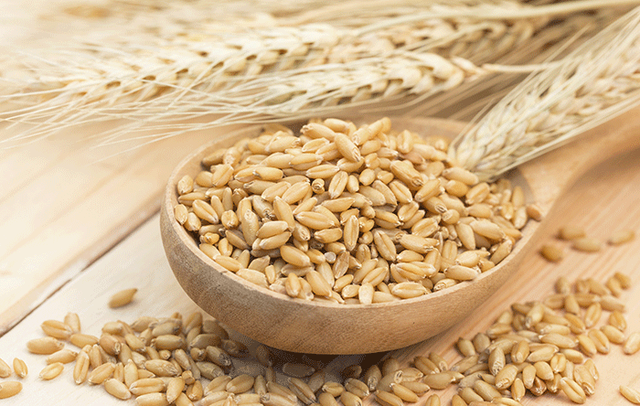Fiber-rich grains like oats and quinoa can reduce the amount of carbohydrates your body absorbs. Here are some of the top grains to include in a low-carb diet for weight loss and good health.
1. Why choose low-carb grains?
Low-carb grains are grains that are lower in carbohydrates (also known as starch) than regular grains such as white rice and white bread. Instead, they are rich in fiber , protein , and other nutrients . Low-carb grains provide health benefits in many ways:
- Weight control: The fiber in low-carb grains helps you feel full longer, reduces cravings, and aids in weight loss.
- Stabilize blood sugar: Fiber helps the body absorb sugar more slowly, preventing blood sugar spikes.
- Improve heart health: Many low-carb grains are rich in fiber and healthy fats, which help lower cholesterol and blood pressure.
- Support digestion: Fiber in grains helps the digestive system work better, preventing constipation.
Grains are diverse and easy to prepare. When using low-carb grains, people will have more food options, avoiding boredom. Whole grains are not only rich in fiber but also provide many essential nutrients for the body, supporting overall health. Whole grains also help control weight in a healthy way.
2. Some low-carb grains to eat regularly
2.1 Oats

Oatmeal has high nutritional value, providing many nutrients that are good for health.
Oats are a good source of many important nutrients, including fiber. Oats are also rich in beta-glucan, a type of fiber that studies have shown to lower LDL cholesterol levels. High LDL cholesterol is a risk factor for heart disease, according to researchers. Oats are also a good source of several other micronutrients, including manganese, phosphorus, magnesium, and thiamine.
According to the American Heart Association, adding more fiber as part of a healthy diet can help improve blood cholesterol levels, reducing the risk of heart disease and stroke. Soluble fiber lowers LDL cholesterol, reduces inflammation, and lowers blood pressure. Sources of soluble fiber include legumes, flaxseeds, and oats.
Choose steel-cut or rolled oats instead of highly processed varieties, such as instant oatmeal.
2.2 Quinoa

Quinoa should be added to a healthy diet to help lose weight but still get enough nutrition.
Quinoa, also known as quinoa, is rich in antioxidants and beneficial polyphenols. According to researchers, these properties may help reduce inflammation and protect against chronic diseases.
Researchers have also found that quinoa is also one of the few plant-based sources of complete protein. This means it contains all nine essential amino acids that the body needs to get from food sources. In addition, quinoa is rich in many other important nutrients, including manganese, magnesium, phosphorus, copper, and folate.
2.3 Millet

Millet is a rich source of fiber, which helps the digestive system function properly, preventing constipation and intestinal problems.
Millet is an ancient grain grown around the world. Like other grains, millet is high in antioxidants and polyphenols. According to researchers, these antioxidants may help prevent chronic diseases such as type 2 diabetes. Millet is also a good source of fiber and has a relatively low net carb content, making it a great addition to a healthy, low-carb diet.
Millet contains a significant amount of protein, which is especially beneficial for vegetarians and those looking to build muscle. Millet is rich in B vitamins (B1, B2, B6), iron, magnesium, phosphorus, and folate. These nutrients play an important role in energy metabolism, red blood cell production, and nerve function. Millet also contains antioxidants that help protect cells from damage, reducing the risk of chronic diseases.
2.4 Flaxseeds

Flaxseeds are low in carbs but rich in nutrients.
Flaxseeds are a great choice for those on a low-carb diet.
Flaxseeds are fairly low in carbohydrates, which come mainly from fiber. Fiber helps keep you full, stabilizes blood sugar, and aids digestion. Additionally, flaxseeds are one of the richest sources of plant-based omega-3 fatty acids. Omega-3s are important for heart health, reducing inflammation, and improving brain function.
Flaxseeds provide a significant amount of protein, which is essential for muscle growth and cell repair. Flaxseeds are also rich in lignans. Lignans are powerful antioxidants found in flaxseeds that help protect cells from damage and reduce the risk of certain cancers.
2.5 Popcorn
Most people think of popcorn as just a snack, but it is technically a whole grain. It’s also one of the lowest-carb grains available, plus it’s low in calories and provides B vitamins, iron, magnesium, and phosphorus.
However, choose popcorn that’s low in or low in unhealthy fats, added sugars, and artificial flavors.
2.6 Barley

Barley is rich in soluble fiber, which helps slow the absorption of sugar into the blood.
Barley is a nutritious grain that is known for its rich flavor and chewy texture. Barley is also high in fiber, and cooked barley is an excellent source of selenium, magnesium, manganese, zinc, and copper. Because of its high fiber content, barley is a great alternative to refined grains.
Choose hulled barley over unhulled barley whenever possible. According to researchers, hulled barley contains more nutrients than unhulled barley. Hulled barley is a highly nutritious whole grain that offers many health benefits. When the tough outer shell is removed, the nutrients inside become more easily absorbed.





